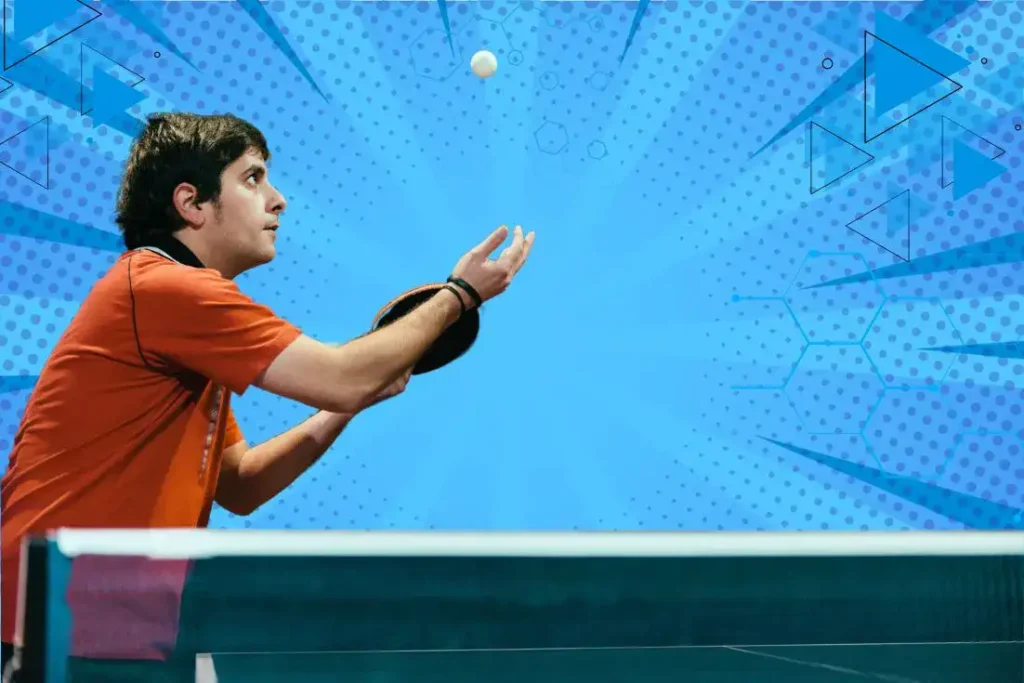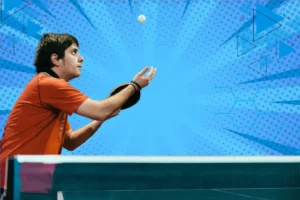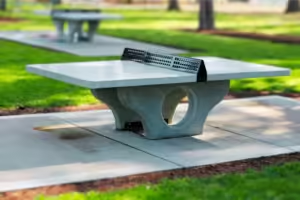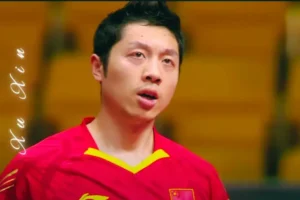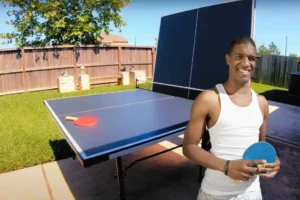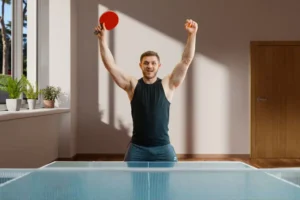Table tennis serve techniques are essential for anyone looking to improve their ping pong game. A good serve can set you up for success and give you an edge over your opponent. Picture the thrill of making a perfect serve and watching your opponent struggle to return it.
By mastering different table tennis serve techniques, you can take your game to the next level. Whether you’re new to the sport or have been playing for a while, improving your serve is key. Explore these techniques and see how they can make your matches more exciting and rewarding.
Key Takeaways
- The table tennis serve is not just a formality; it’s a strategic move that can shape the entire dynamic of a match.
- Various services in table tennis involve spins, placements, and tactical nuances, influencing the course of the game significantly.
Basic Table Tennis Serves Techniques
- Forehand Serve: Let’s start with the basics. The forehand serve is like the ABCs of serving, offering a foundation for beginners. Executing a good forehand serve is your entry ticket to controlled spins and strategic ball placements in key points like the end line of the table. Picture a graceful stroke motion of a tennis player, striking the ball with the paddle’s contact on the right side, crafting spins that keep the opponent guessing about the next serve.
- Backhand Serve: Now, let’s swing to the other side – the backhand serve. It adds a layer of unpredictability, as players utilize their backhand side to keep opponents on their toes.
- Backspin Serve: Enter the realm of the mystical backspin serve. This isn’t just a serve; it’s a wizardry of reverse spins that can bewilder opponents. Mastering it requires a precise paddle dance to create maximum spin and control.
Advanced Serve Variations
- Pendulum Serve: Imagine your serve as a pendulum – rhythmic and unpredictable. The pendulum serve is a dance of spins, demanding wrist finesse and impeccable timing.
- Sidespin Serve: Now, let’s spice things up with Sidespin. The left-to-right sidespin serves and its counterpart is like serving a curveball, challenging opponents to decipher your spin magic.
- Topspin Serve: Craving some offense? The topspin serve is your go-to move. Brush the ball from bottom to top, creating a forward spin that sets the stage for aggressive plays.
Strategic Serve in Table Tennis
- Placement Strategy: Serving is not just about hitting the ball; it’s about placing it strategically. Serve away from the table, and target corners – disrupt your opponent’s rhythm and limit their shot options.
- Speed Variation: Change the game tempo with long serves and short serves. It’s a psychological game, making opponents second-guess and challenging their anticipation skills.
- Deception Tactics: Picture this – a ghost serve or a reverse pendulum serve. Deception is an art. It’s about creating illusions and making opponents question reality.
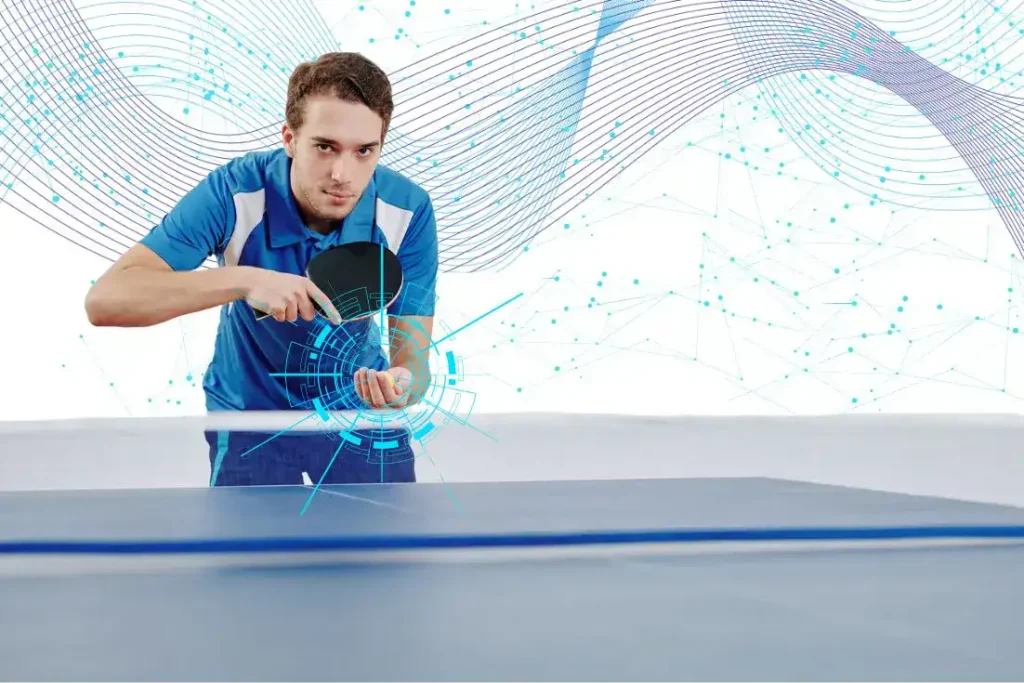
Deceptive Serves rules
- Ghost Serve: The ghost serve is like a magic trick. Disguise the ball’s spin and trajectory, leaving opponents scratching their heads. Master it, and you’re the illusionist of the table.
- Left to Right Sidespin Serve: A sideways spin that perplexes opponents. Execute the left to right sidespin serve with a brush to create a trajectory that defies expectations.
- Forehand or Backhand Serve Deception: Now, imagine serving with a poker face – forehand or backhand serve deception. It’s about keeping your cards close, making it a guessing game for opponents.
Specialized Serves for Attack and Defense
- Chop Serve: Need a defensive move? The chop serve brings a heavy backspin into play, forcing opponents into a passive stance and setting the stage for counter-attacks.
- Forehand Pendulum Serve: Flip the script with a serve that generates topspin. The forehand pendulum serve is your offensive trump card, creating openings for powerful follow-up shots.
Serving Tactics for Different Opponents
- Adapting to Opponents’ Styles: It’s like a chess match. Against aggression, unleash difficult-to-return serves and fast serves. Defensive players? Try the backhand sidespin serve, creating openings for your offensive game.
- Strategic Placement: It’s not just about serving; it’s about serving with a purpose. Target opponents’ weaknesses and exploit their playing styles – it’s strategic warfare.
Returning Serves
- Assertive Stroke Making: Returning serves as an art. It’s about making assertive strokes, adapting to different serves, and keeping an eagle eye on the ball’s spin and trajectory.
- Readiness and Adaptation: Quick adaptation is the key. Reading opponents’ serves, and understanding their patterns – it’s the anticipation game that can make or break your return.
Drills and Practice
- Consistent Practice Regimens: Imagine practicing your serves like a musician perfecting a note. Regular practice sessions are your ticket to precision, control, and adaptability during real-match scenarios.
- Focused Skill Development: Devote time to specific serve types, strategize placements, and practice deceptive serves. It’s not just about practice; it’s about practicing with intent.
Common Mistakes to Avoid
- Telegraphing Serves: Think of it as poker – don’t give away your hand. Minimize body cues and paddle movements that spill the beans on the type of serve you’re about to deliver.
- Lack of Variation: Don’t be a one-trick pony. Diversify your serve types; keep opponents guessing. Predictability is your foe.
- Reading Opponents’ Serves: Be a detective—observe, adapt, and conquer.
Conclusion The journey to mastering table tennis serve techniques isn’t a sprint; it’s a marathon that requires dedication, practice, and a profound understanding of the game’s nuances. Embracing diverse serve variations, strategizing for different opponents, and the unceasing quest for improvement are the hallmarks of a player who owns the table.
FAQs
Q. What is the legal way to serve in table tennis?
Ans: According to ITTF rules, the ball must be thrown at least 16 cm upwards and struck behind the table. The serve must be visible to the opponent at all times.
Q. Why is my serve inconsistent?
Ans: Inconsistency can be due to improper grip, poor ball toss, or lack of practice. Focus on these areas to improve consistency.
Q. What equipment helps improve my table tennis serve techniques?
Ans: High-quality paddles, balls, and training aids like spin trainers or table tennis robots can help improve your serve techniques.
Q. How do different table tennis serve techniques impact the game?
Ans: Different serve techniques can control the pace, spin, and placement of the ball, making it harder for the opponent to return and giving you a strategic advantage.
Q. What are common mistakes to avoid when serving?
Ans: Common mistakes include a poor ball toss, inconsistent paddle angle, and not hiding the ball from the opponent. Practice and attention to detail can help avoid these errors.
Conclusion
The journey to mastering table tennis serve techniques isn’t a sprint; it’s a marathon that requires dedication, practice, and a profound understanding of the game’s nuances. Embracing diverse serve variations, strategizing for different opponents, and the unceasing quest for improvement are the hallmarks of a player who owns the table.
